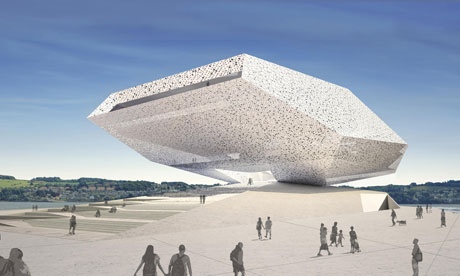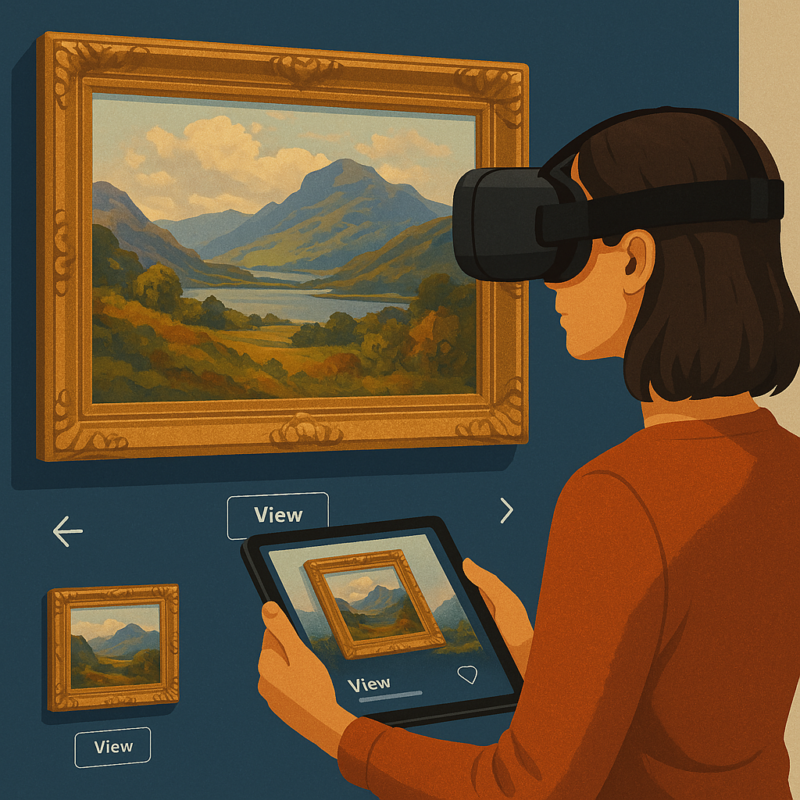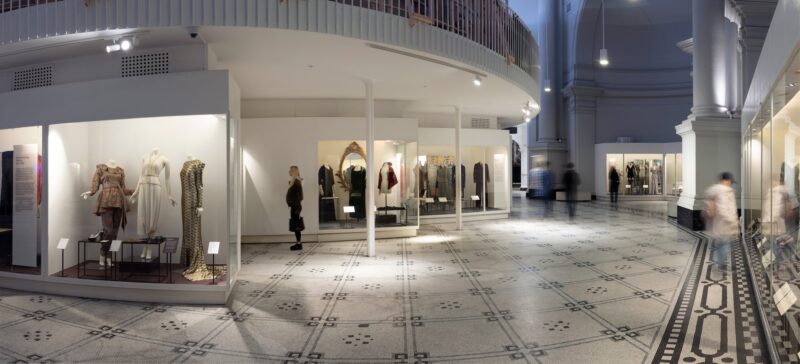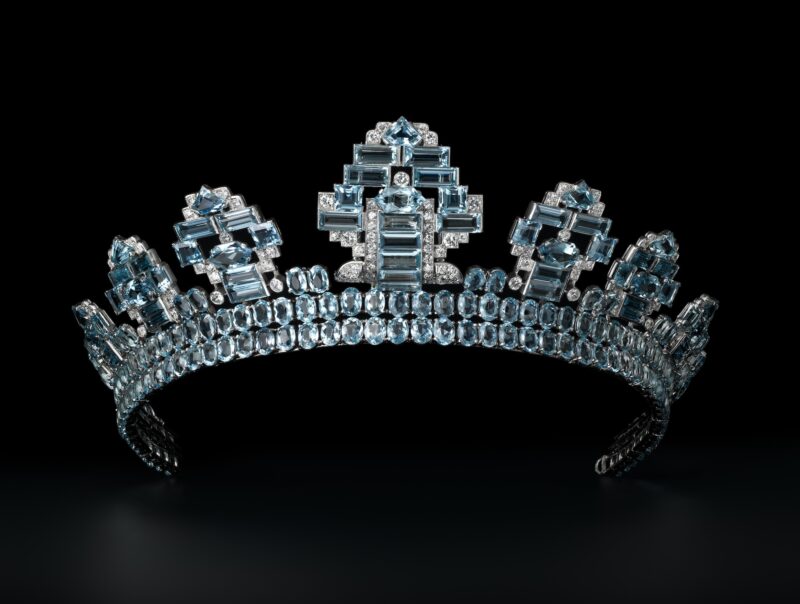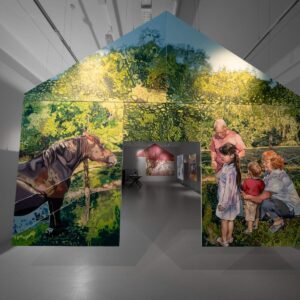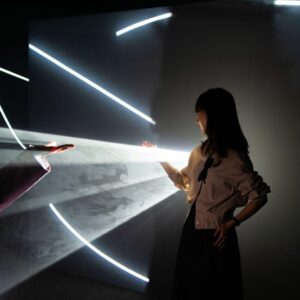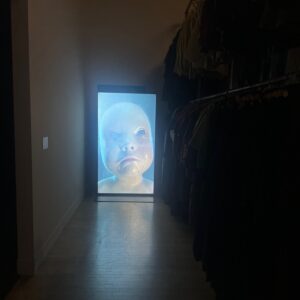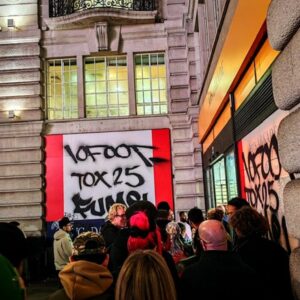The architect’s drawings show sloping flanks and bold angles that should mark out a landmark museum. Sitting on the banks of the river Tay, this new northern outpost for the V&A would look like a futuristic battleship.
The design of floating horizontal layers of stone compound and glass, with its grey prow jutting over the Dundee waterfront, is by the Japanese architect Kengo Kuma.
It is intended to be one of the biggest museums built in Britain for decades, a centre for the history of British design that will – for the first time – provide the V&A with a permanent home to display parts of its collection outside London.
Alongside exhibitions celebrating Scottish products such as Paisley pattern fabric and Fair Isle sweaters, the engineering of the Victorian bridge-builder Thomas Telford, the architecture of Robert Adam, or genre-defining Dundee-designed computer game Grand Theft Auto, the museum aims to showcase major V&A exhibitions on tour from its Kensington base.
But while the intellectual ambitions for the V&A at Dundee have grown, the building project has had to retreat, forced by the recession and an over-ambitious original design from Kuma to delay its opening and scrap plans to build on the Tay.
“We want to make sure we’re developing something that will deliver something extraordinary for Scotland in a building with an extraordinary design,” said Philip Long, the project’s director. That has meant greater realism about the scale and ambition of the project. His goal is deliver “the same fabulous design [which] stays within budget”.
Its opening date, originally 2014 when the proposal was launched three years ago at the height of the global recession, is now 2015 at the earliest. And that, admits Long, is an aspiration. He now sees 2015 as the target date for finishing the building – not necessarily opening it to the public.
“We can’t be clear about our opening date until we’ve satisfied certain very major elements for developing the project [which are] not always under our control,” said Long.
One of those elements is external funding decisions, and that means controlling costs. On the advice of marine engineers, the building has now been brought onland: it will no longer float over the river, resting on expensive and risky piling. To the irritation of other architects, who feel the rules were stretched to allow Kumo’s original design to win, the building has been scaled back: its floorspace will grow, from 7,122m2 to 8,190m2, yet the building’s frontage has been reduced by 3,700m2 to help cut costs.
“There’s a great deal of excitement about Kengo Kuma’s building for Dundee, but the building itself is the envelope for delivering that extraordinary new institution in the UK on design, an understanding of our design history and looking at our design future. So we want to protect that,” he said.
“The decision to pull it on land has allowed us to substantially de-risk the project. [In] many ways, this offers a design improvement for the project.”When the V&A at Dundee project was unveiled in January 2010 the promoters claimed they could quickly raise more than £45m – divided into three £15m chunks to come from the Scottish government, national bodies such as the Heritage Lottery Fund, and wealthy private philanthropists and corporate donors.
Two of these have not materialised: the scheme’s only financial backer at present is the Scottish government, run by the Scottish National party which is keenly funding arts and cultural projects, and is particularly keen to keep political control of Dundee – a city it has wrested from Labour. It has already spent £3.25m on the upfront costs to develop the project – including its exhaustive planning application and early designs, and has promised a further £15m for construction.
But no generous private donor or cash-rich corporation has yet committed money. This suggests private sponsors were unconvinced by Dundee’s original case for such a scheme, particularly during a global recession. They may be curious too that the V&A is not investing money in the project.
The V&A says it does not regard the Dundee scheme as a V&A institution: it is a self-financed partner using its branding. Unlike the successful expansions by the Tate art galleries into St Ives and Liverpool, the museum has had a troubled history with plans for provincial outposts.
Proposals for a V&A “franchise” in Bradford collapsed in recriminations in the 1980s. Its scheme for a franchised base in Blackpool – a project outlined in its current strategic plans and seriously pursued two years ago – is on hold. Its tie-up with Sheffield’s museums, established in 1999, is lower key too, based around object loans, talks and schools projects and next year the city will present the V&A’s Japanese cloisonné exhibition.
Long needs £33m to build Kuma’s design. He needs a further £12m to finish it, for the electrical wiring, plant room, exhibition spaces, chairs and offices. Public funding bodies are now in play, however, and the next few months will prove crucial to the scheme’s success.
The Heritage Lottery Fund will decide this year on whether to give the V&A at Dundee up to £9.2m in capital funding; the scheme has already cleared the HLF’s initial sifting process. Other funders, including the European Regional Development Fund, attracted by the museum’s role as the centrepiece of Dundee’s £1bn waterfront regeneration scheme, and the arts lottery scheme, are also evaluating Long’s bids.
He is optimistic the £33m will arrive: private sources are now keenly interested. He has “a lot of conversations going on with private individuals that we hope will be able to help us but those details I can’t go into at the moment”.
He said donors were more engaged by the scheme’s more ambitious vision. A V&A spokeswoman said: “The vision for V&A at Dundee has evolved significantly since the appointment of Philip Long.”
The V&A’s investment in the project is now much greater than goodwill, modest loans and the loan of temporary travelling exhibitions.
It has a curator focusing on preparing collections to go on display in Dundee for five to 10 years; its research department is helping design displays; and it advises on the Dundee building design.
Long also expects to borrow key exhibits from other major Scottish institutions; no deals have been agreed, but he has begun exploratory talks with the Kelvingrove and Burrell Collection in Glasgow, and the National Museum of Scotland in Edinburgh. “We’ve been getting very enthusiastic interest in that,” Long said.Long hints the original estimates for average visitor numbers of 300,000 a year will be revised upwards, now the V&A will be offering more of its riches and its alliances with other Scottish collections have strengthened its future exhibitions.
New visitor projections will be published early in 2013, he said. They will need to be significant: in addition to the £48.5m spent preparing and building the museum, it will also need constant grant funding to cover its running costs.
Ticket receipts, commercial sponsorship, cafe and gift shop sales will not cover its day-to-day spending. He admits he is still in talks with ministers in Edinburgh about securing that essential element to the plan.
But his plan is to make the V&A at Dundee an international-level institution will still mean celebrating its host city, and its industries, including the comics produced by its famous publisher DC Thomson. “The graphic comic tradition is the Thomson tradition, the Beano and Dandy, which now extends to computer design as a form of entertainment. It runs from Denis the Menace, Minnie the Minx through to Grand Theft Auto,” he said.
guardian.co.uk © Guardian News & Media Limited 2010
Published via the Guardian News Feed plugin for WordPress.
